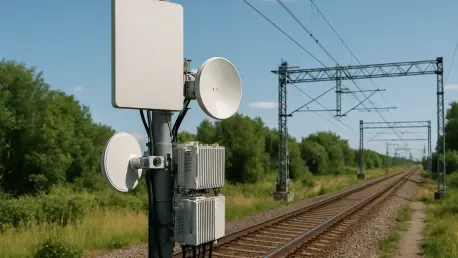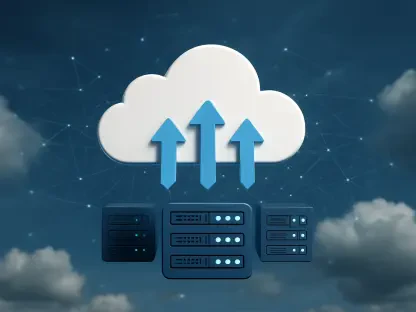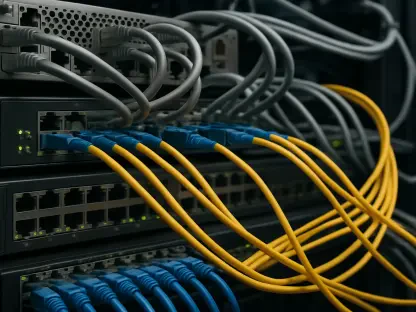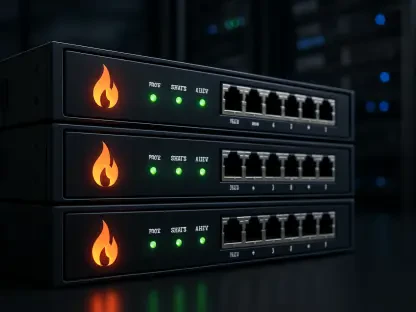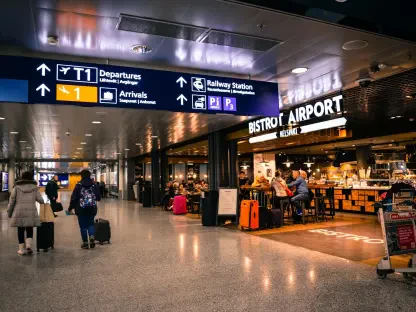Imagine a world where trains operate autonomously with flawless precision, where real-time data streams ensure passenger safety, and where rail networks across borders communicate seamlessly without a hitch. This vision is becoming reality through a pioneering collaboration between Nokia and Deutsche Bahn (DB), as they roll out the world’s first commercial 5G radio network for the Future Railway Mobile Communication System (FRMCS) on a live test track in Germany’s Ore Mountains. This groundbreaking step signals a major shift away from the outdated 2G-based GSM-R (Global System for Mobile Communications – Railway) system, which has underpinned European rail communications for decades. By leveraging cutting-edge 5G technology, this initiative promises to transform rail operations with enhanced data capabilities, setting a new standard for the industry. As the urgency to modernize railway communication grows, this project emerges as a beacon of innovation, addressing both current limitations and future demands with a forward-thinking approach.
Pioneering the Shift to Modern Rail Communication
Breaking Ground with Commercial FRMCS Deployment
The partnership between Nokia and DB represents a historic milestone in railway technology, marking the first time a commercial FRMCS network has been deployed on an active test track. Utilizing Nokia’s advanced AirScale 1900 MHz (n101) radio and a railway-optimized 5G standalone (SA) core, this system is specifically designed for the international FRMCS band to ensure mission-critical reliability. Unlike the aging GSM-R, which struggles with modern data demands, FRMCS offers higher bandwidth and supports innovative applications like real-time video streaming and predictive maintenance. This deployment not only proves the technology’s readiness for real-world application but also highlights a practical solution for rail operators worldwide. By focusing on a live environment rather than lab simulations, the project demonstrates tangible progress, providing a model for how rail communication can evolve to meet contemporary needs with efficiency and precision.
Overcoming Transition Challenges with Innovative Solutions
Transitioning from GSM-R to FRMCS is no small feat, given the technical and financial hurdles involved, yet Nokia’s technology offers a strategic pathway forward. One of the standout features of this system is its ability to support a dual operation mode, allowing GSM-R and FRMCS to function simultaneously during the migration period. This ensures continuity of service while upgrades occur, mitigating disruptions. Additionally, features like failover mechanisms and self-healing capabilities enhance network reliability, addressing the critical nature of rail communications. The use of the 1900 MHz spectrum band, designated globally for rail use, further aligns the project with international standards, paving the way for cross-border interoperability. While the road to full adoption remains complex, with denser infrastructure and retrofitting of rolling stock required, this initiative showcases how innovation can tackle logistical barriers, offering a glimpse into a more connected and automated rail future.
The Broader Impact on European Rail Networks
Driving a Continent-Wide Push for FRMCS Adoption
Across Europe, the momentum to adopt FRMCS is gaining traction, with Nokia and DB’s project feeding into a larger collaborative effort. This test aligns with the EU-funded FP2-MORANE-2 program, coordinated by the International Union of Railways (UIC), which includes contributions from countries like Spain, the Netherlands, and Sweden. National initiatives are also underway, with Spain’s Adif conducting pilots, France’s SNCF Réseau enhancing its telecom core, and the UK formulating a migration strategy. The shared goal is to modernize rail systems to support the European Rail Traffic Management System (ERTMS), improving safety and efficiency. However, the estimated cost of a continent-wide rollout, running into several billion euros according to the European Union Agency for Railways, underscores the scale of investment needed. This collective push highlights FRMCS as the inevitable successor to GSM-R, critical for a unified and technologically advanced rail network.
Balancing Opportunities and Obstacles in Modernization
While early adopters like Nokia and DB are setting a powerful example, the journey to full FRMCS implementation across Europe is fraught with challenges that demand careful navigation. The potential for automation and smart infrastructure through FRMCS is undeniable, promising to revolutionize rail operations with enhanced connectivity and data-driven insights. Yet, the financial burden and the need for standardized, interoperable systems to prevent regional fragmentation pose significant risks of delays or uneven progress. Cross-border coordination remains a pivotal issue, as discrepancies in adoption timelines or technologies could undermine efficiency gains. Despite these obstacles, the consensus remains clear: modernizing rail communication is essential for future growth. As projects like this one demonstrate FRMCS’s capabilities, they also serve as a call to action for stakeholders to address these hurdles through sustained collaboration and strategic planning.
Reflecting on a Milestone for Rail Innovation
Lessons from a Groundbreaking Partnership
Looking back, the collaboration between Nokia and Deutsche Bahn stood as a defining moment in the evolution of railway communication. Their successful deployment of a commercial FRMCS network on a live test track in Germany proved that transitioning from outdated systems like GSM-R was not only feasible but also transformative. This initiative highlighted the power of tailored 5G technology to meet the stringent demands of mission-critical rail operations. By addressing real-world challenges with innovative solutions, such as dual-mode functionality and robust reliability features, the project offered a blueprint for others to follow. It also underscored the importance of aligning with global standards to ensure seamless integration across borders. Reflecting on this achievement, it became evident that such pioneering efforts were instrumental in building confidence among rail operators to embrace the shift toward a more advanced communication framework.
Charting the Path Forward for Global Rail Systems
As the industry looked ahead from this pivotal achievement, the focus shifted to actionable steps for scaling FRMCS adoption worldwide. The success seen in Germany served as a catalyst, urging rail networks to accelerate their modernization plans before critical deadlines loomed in the coming decade. Stakeholders were encouraged to prioritize investments in infrastructure and technology upgrades, ensuring that financial constraints did not derail progress. Collaborative frameworks, similar to those fostered by European programs, emerged as a vital strategy for sharing knowledge and resources. Additionally, fostering dialogue among nations to harmonize standards promised to mitigate interoperability issues. Ultimately, the legacy of this early FRMCS deployment was a reminder that sustained commitment and innovation could unlock a future where rail systems operated with unparalleled safety, efficiency, and connectivity on a global scale.
